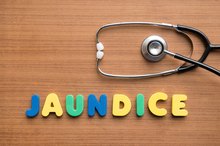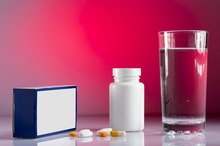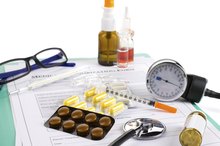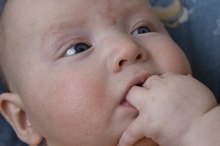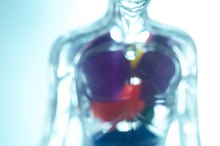What does fact checked mean?
At Healthfully, we strive to deliver objective content that is accurate and up-to-date. Our team periodically reviews articles in order to ensure content quality. The sources cited below consist of evidence from peer-reviewed journals, prominent medical organizations, academic associations, and government data.
The information contained on this site is for informational purposes only, and should not be used as a substitute for the advice of a professional health care provider. Please check with the appropriate physician regarding health questions and concerns. Although we strive to deliver accurate and up-to-date information, no guarantee to that effect is made.
Difference Between Physiological & Pathological Jaundice
Physiological and pathological jaundice both result in a yellow tint to the skin, whites of the eyes and mucous membranes but are caused by different conditions.
If you are experiencing serious medical symptoms, seek emergency treatment immediately.
Physiological Jaundice
When jaundice occurs in a healthy baby, it is considered physiological jaundice. Most babies have a degree of jaundice after birth because their liver is unable to process bilirubin.
Pathological Jaundice
What Causes Jaundice in Toddlers?
Learn More
Pathological jaundice can occur in children or adults and is the result of jaundice that presents a health risk because of its degree or cause.
Causes
With physiological jaundice, newborns are often unable to process the bilirubin in their system after birth. When high levels of bilirubin accumulate, a yellowing effect can occur.
Underlying causes of pathological jaundice include: blood incompatibilities, blood diseases, genetic syndromes, hepatitis, cirrhosis, bile duct blockage, other liver diseases, infections or medications. In addition, it applies to newborns with jaundice exaggerated by dehydration, prematurity, difficult delivery or other reasons.
- With physiological jaundice, newborns are often unable to process the bilirubin in their system after birth.
- In addition, it applies to newborns with jaundice exaggerated by dehydration, prematurity, difficult delivery or other reasons.
Treatment
3 Types of Jaundice
Learn More
Physiological jaundice generally clears on its own. However, in more severe cases, phototherapy may be recommended to help break down the bilirubin.
In pathological jaundice, the underlying causes of the jaundice are treated and once corrected, the jaundice will clear.
Warning
If you suspect you or your child has jaundice, contact your doctor to ensure proper testing, diagnosis and treatment 1.
Related Articles
References
- “The Complete and Authoritative Guide Caring for Your Baby and Young Child,” Steven P. Shelov, M.D., M.S., F.A.A.P. and Robert E. Hannemann, M.D., F.A.A.P., 2005
- Bilirubin Blood Test. US National Library of Medicine. 2019.
- Jaundice. US National Library of Medicine. March 2019.
- Chen HL, Wu SH, Hsu SH, Liou BY, Chen HL, Chang MH. Jaundice revisited: recent advances in the diagnosis and treatment of inherited cholestatic liver diseases. J Biomed Sci. 2018;25(1):75. doi:10.1186/s12929-018-0475-8
- Liver function test. US National Library of Medicine. September 2019.
- Hepatitis Panel. US National Library of Medicine. October 2019.
- Ziessman HA. Hepatobiliary scintigraphy in 2014. J Nucl Med Technol. 2014;42(4):249-59. doi:10.2967/jnumed.113.131490
- Gamersddin M, Abdalgaffar R, Yousef M.The role of ultrasound in diagnosis of obstructive Jaundice causes in Sudanese population. IOSR Journal of Nursing and Health Science. 2013;1(4):25-28. doi:10.9790/1959-0142528
- Herrine SK. Jaundice in Adults. Merck Manual Consumer Version. May 2018.
- Hemolytic Anemia. National Institutes of Health.
- Gallstones. Cleveland Clinic. October 2019.
- Bhutani VK. Filtered sunlight noninferior to conventional phototherapy. J Pediatr. 2016;170:341-2. doi:10.1016/j.jpeds.2015.12.054
- Siddiqui AA. Primary Sclerosing Cholangitis. Merck Manuals Consumer Version. November 2018.
Writer Bio
Kristin A. Ricca is a freelance writer in Tampa, Fla., with more than six years of marketing and communications experience. She writes on a variety of topics and has specific knowledge in the legal and tourism industries. She earned a degree in business administration from the University of South Florida.

